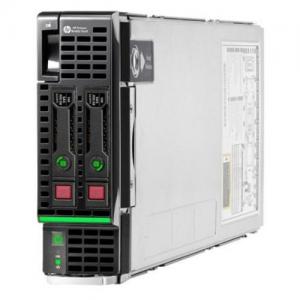Infinian Technology Dealer, Distributor and Partner of HPE Blade Servers includes HPE Synergy 480, HPE Synergy 660, HPE Synergy 12000 frame, HPE ProLiant BL660c Server Blade, BL460c, BL920s, BladeSystem c3000, BladeSystem c7000, etc.. One infrastructure and one management platform to speed the delivery of services for Price/Cost Call: 9739091119
We Make IT Procurement Easier
We’re Infinian Technology an ICT Company that delivers hardware and solutions for your business, from the begging stages expansion.

Hewlett Packard Enterprise (HPE) Blade Servers are modular, high-performance computing systems designed to optimize data center space, energy consumption, and management efficiency. Blade servers are essentially a collection of server “blades” housed in a single enclosure, making them ideal for large-scale deployments where space, cooling, and power efficiency are critical. These servers are often used in enterprise environments that require high computing power, scalability, and ease of management.
Main Blade Platforms by HPE
1. HPE Synergy (Modern Blade Architecture – Composable Infrastructure)
Synergy is HPE’s next-generation blade system, replacing older c-Class systems. It supports compute, storage, and networking in one platform, managed via HPE OneView.
| Component | Description |
|---|---|
| HPE Synergy 12000 | Chassis for compute, storage, fabric |
| Synergy 480 Gen10/Gen11 | 2-socket compute blade |
| Synergy 660 Gen10 | 4-socket compute blade |
🟢 Ideal for:
- Private cloud (VMware, Hyper-V)
- SAP HANA
- DevOps and automation pipelines
2. HPE BladeSystem c-Class (Legacy, Still Supported)
A more traditional blade platform, gradually being phased out.
| Component | Description |
|---|---|
| c7000 Enclosure | 10U chassis, up to 16 half-height blades |
| BL460c Gen10 | 2-socket, most common compute blade |
| BL660c Gen9/Gen10 | 4-socket blade |
🟡 Still widely used in:
- Virtualization
- Legacy app support
- Data center consolidation
Key Features of HPE Blade Servers:
- Modular Design: HPE Blade Servers feature a blade architecture, where individual server blades (essentially full servers in a compact form) are inserted into a shared chassis. This chassis provides common resources like power, cooling, and networking to all the blades, minimizing physical space requirements.
- Scalability: Blade servers can easily be expanded by adding additional blades to the chassis. This makes them ideal for growing businesses or environments that require flexible scaling without a significant increase in physical footprint.
- Centralized Management: HPE’s OneView and iLO (Integrated Lights-Out) management tools allow administrators to monitor, manage, and configure all the blades in a chassis from a centralized interface. These tools simplify tasks such as firmware updates, server health monitoring, and provisioning.
- Energy Efficiency: Since multiple blades share common power supplies, fans, and cooling within a single chassis, HPE Blade Servers are typically more energy-efficient than traditional rack-mounted servers. This reduces both energy costs and the physical space required for large deployments.
- High Performance: HPE Blade Servers can be configured with powerful processors (Intel Xeon, AMD EPYC), large amounts of RAM, and fast storage options (SSD, HDD, and NVMe), making them suitable for demanding workloads like virtualization, cloud computing, database management, and analytics.
- Flexible Storage Options: The chassis can accommodate various storage options and configurations, including local disk drives, SSDs, and external storage solutions, such as SAN (Storage Area Network) or NAS (Network-Attached Storage).
- Networking: HPE Blade Servers often include integrated network modules that provide high-speed Ethernet, Fibre Channel, or InfiniBand connections. These integrated solutions help streamline networking, reduce cabling complexity, and improve overall performance.
- Redundancy and Reliability: HPE Blade Servers are designed with built-in redundancy for power supplies, cooling, and networking components. This ensures that in case of failure, the system can continue to operate without disruption.
Here’s a quick look at HPE Blade Server prices in India across popular models:
| Model | Approx. Price (INR) | Highlights |
|---|---|---|
| ProLiant BL460c Gen8 | ₹37,999–₹59,708 | Compact, dual-socket, DDR3 support |
| ProLiant BL420c Gen8 | ₹40,000–₹65,000 | Ideal for SMBs, virtualization |
🚀 Mid-Range & Gen9/Gen10 Models
| Model | Approx. Price (INR) | Highlights |
|---|---|---|
| Apollo R2600 Gen10 | ₹299,999–₹344,998 | High-density, cloud-ready |
| ProLiant BL460c Gen9 | ₹80,579–₹88,590 | Xeon E5 v3/v4, DDR4, PCIe Gen3 |
| Integrity BL860c i4/i6 | ₹385,006–₹423,506 | Itanium CPUs, up to 384GB RAM |
| Model | Approx. Price (INR) | Highlights |
|---|---|---|
| Integrity BL890c i6 | ₹1,500,000+ | 8-socket, 1.5TB RAM, HPC workloads |
| ProLiant XL220A Gen9 | ₹450,000+ | AI, ML, Big Data ready |
What are different types of servers?
Types of Servers
Web server. Web servers are designed to run websites and apps through client programs (web browsers) such as Internet Explorer, Chrome, Firefox, Opera, or Safari. ...
- Mail server. ...
Application server. ...
Database server. ...
DNS server. ...
Proxy server. ...
DHCP server. ...
File server.
HPE Synergy a blade server?
HPE BladeSystem and HPE Synergy are both solutions in the Blade Servers category.
What size is a blade server?
Blade servers are modular, single-board computers, typically about 7 in. high, 2 in. wide and 19 in. deep.
What is the difference between blade and node servers?
When I talk about multi-nodes, I'm referring to a 2U system that can hold 1 – 4 compute nodes. They are similar to blade servers in that they share power and cooling (and maybe management.) But, they are different to blade servers in that each server supports its own storage and networking.
